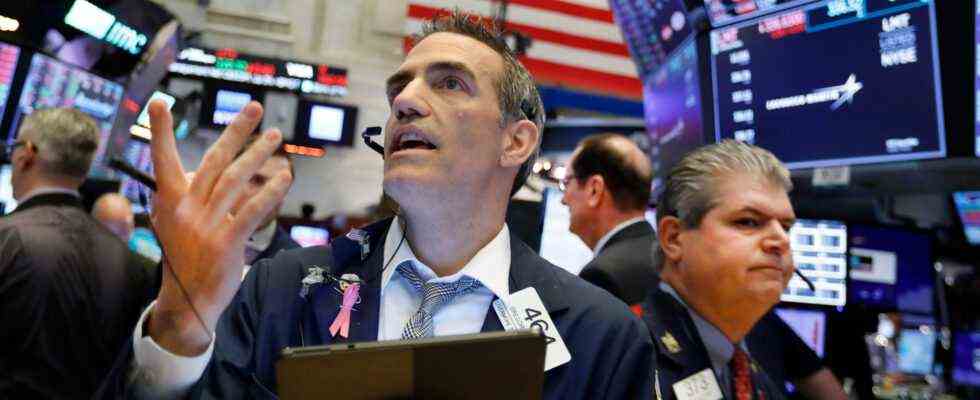analysis
Status: 07/01/2021 4:13 p.m.
The DAX and Dow have had an extremely successful half-year. But the stock market indices will find it difficult to continue these price gains. This is not only due to high inflation rates.
From Angela Göpfert,
tagesschau.de
The stock market balance for the first half of the year: The German leading index DAX posted gains of 13.2 percent. The US leading index Dow Jones presented itself in a similar way with an increase of 12.7 percent and the technology-heavy Nasdaq Composite with an increase of 12.5 percent. The S&P 500 index, which tracks the broad US market, even increased by 14.4 percent.
Hardly any upside potential
However, this review says absolutely nothing about the prospects for the stock markets in the second half of the year. David Kostin, US chief equity strategist at Goldman Sachs, does not entirely rule out further upside potential for the markets until the end of the year. But he is convinced that it will be more difficult to generate price gains.
“There was this reopening trade, but it is as good as through. The extreme point of expansion is already behind us,” emphasizes Robert Rethfeld, market expert from Wellenreiter-Invest tagesschau.de. “The second half of the year is likely to be characterized by stagnation and even slight corrections. It doesn’t have to be a big sell-off, but the strong upward pace of the first half of the year will no longer exist.”
That is the crucial question now
The inflation issue will remain the crucial question for the stock market in the next six months. While possible restrictions due to the delta variant or other corona mutants could dampen the mood on the stock exchanges in the short term, according to experts, rising inflation rates and, as a result, rising interest rate expectations have what it takes to put sustained pressure on the stock markets.
Rising interest rates make stocks less attractive compared to bonds. Especially with tech stocks, interest rate developments are seen as a risk factor for future earnings.
Temporary high inflation?
The combination of steadily increasing inflation risks and a high valuation of US equities leads us to expect a very volatile second half of the year, says Andreas Hürkamp, Head of Equity Strategy Commerzbank. Concerns about stubbornly high inflation and fears that the Fed would reduce its bond purchases early would increase significantly in the third quarter.
Wave rider expert Rethfeld is also skeptical of the US Federal Reserve’s (Fed’s) attitude to date, dismissing high inflation as a temporary phenomenon: “Inflation will definitely not be temporary. It will change in the second half of the year both in the US and in the US in Europe, leveling off at a higher level above the three percent mark. This is negative for the stock markets, as they perform best at inflation rates of one to three percent. ”
Growing political risks
The second major problem for the stock markets – beyond rising interest rates – Goldman Sachs expert Kostin identifies the discussion about higher corporate taxes in Washington. Higher taxes are not the only political risk for the markets, especially the shares of the big technology companies, in the second half of the year.
Amazon, Apple & Co. are confronted with a government that is concerned about the growing market power of the tech giants and wants to take regulatory action. A more brutal approach by the US authorities against the tech corporations represents a considerable risk not only for the individual tech stocks, but also for the major American stock indices such as Dow Jones Industrial and S&P 500, in which these corporations have a large weight .
Germany vs. USA – who is ahead?
Some analysts see the European stock markets as having a slight advantage in view of the growing regulatory risks in the USA. Most recently, the market-wide US S&P 500 index was slightly ahead of the DAX: While the S&P 500 set new highs in series in the last few days of June, the DAX no longer came close to its record high.
And this, although the DAX is a performance index, so the dividends paid by the companies are included in its calculation, and it actually has an advantage over pure price indices such as the S&P. It is not for nothing that critics speak of the “Botox-DAX” in this context.
But despite Botox, the DAX could lag behind the US indices in the second half of the year. “We correlate much more strongly here with economic growth than the Americans with their tech values,” Rethfeld emphasizes. “If economic growth cannot maintain the strong momentum of the first half of the year, then this will affect the DAX in particular. Therefore, no outperformance is to be expected from the DAX.”
Hope for Halloween
For the markets on both sides of the Atlantic, meanwhile, the seasonality also warns us to be cautious in the coming months. In the summer months, stocks tend to fall on a statistical average. “In the seasonal perspective we have a low towards September / October,” said Rethfeld.
But after Halloween, i.e. the beginning of November, a cheap entry window opens again from a seasonal perspective. That is when the best six months on the stock market, in statistical terms, begin.

